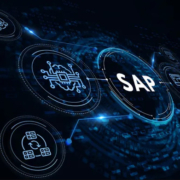What are SAP Data Migration Techniques?
Data migration means moving data from one system to another. In SAP, it is a very important step. It usually happens when a company starts using SAP or upgrades to a new SAP system. If the data is not moved properly, problems can happen in the new system.
You can learn all these steps by step in an Online Course for SAP. These courses teach how to clean, move, and test data safely. They also help you understand the SAP tools used for this job. Many learners choose these courses to start a career in SAP data handling.
Why Data Migration Matters?
Data is very valuable. Every company uses data to run its business. It has records of customers, products, sales, and payments. When moving to SAP, this data must go into the new system without any errors. In case of wrong or missing, the system will not work right. It can change as per billing, reporting, and planning.
That is why data migration is not just copying and pasting. It is a process. It needs planning, testing, and checking.
Main Steps in SAP Data Migration
Here are the main steps most companies follow during SAP data migration:
Step 1: Data Collection
The old data is collected from the current system. This may be Excel files, databases, or other software.
Step 2: Data Cleaning
This is checking the data for mistakes. Duplicate records or missing values are removed or corrected.
Step 3: Data Mapping
Old data is matched with the new SAP system. For example, an old code for a product is matched with the new SAP product ID.
Step 4: Data Loading
The clean data is loaded into SAP. There are tools to help with this.
Step 5: Testing and Validation
This step checks if the data was loaded correctly. Sample records are tested.
SAP Data Migration Tools and Techniques
SAP offers many tools to help move data. Each tool works best for certain tasks.
1. SAP LSMW
This means Legacy System Migration Workbench. It is good for small projects. It helps create simple scripts to load data.
2. SAP BODS
This means BusinessObjects Data Services. It is best for large data migration. It helps clean and move large data from many sources.
3. SAP Data Services
It works well with both SAP and non-SAP systems. It can clean, move, and validate data.
4. BAPI and IDOC
These are technical tools. They are used by developers when more control is needed.
5. Direct Input Method
This method uses SAP’s standard programs. It is fast for certain types of data.
You will learn how and when to use each of these in proper training. If you are near Haryana, the SAP Institute in Gurgaon is a great place to start. This institute offers hands-on sessions and real-time projects. Many students from the city choose it to get better SAP skills.
Data Migration Techniques at a Glance
| Technique | Use Case | Tool Involved |
| Manual Upload | Small datasets | SAP GUI or Excel |
| Batch Input Method | Simple records | LSMW |
| BAPI-based Migration | Custom programming | BAPI |
| IDOC-based Migration | High-volume and real-time data | IDOC |
| Using Data Services | Advanced transformation | SAP BODS, Data Services |
Popular SAP Data Migration Tools Used

As shown, SAP BODS is the most used. It is reliable and works with many systems.
What to Learn in SAP Data Migration Courses?
A good course will teach both basics and advanced topics. You will learn how to:
- Identify data to be moved
- Clean and map data
- Use SAP tools like LSMW or BODS
- Test data after migration
- Fix errors after loading
Some courses also include project work. This helps you get ready for real job tasks. The SAP Training and Certification will also help prove your skills. It is helpful when applying for jobs or moving up in your current role.
Conclusion
SAP data migration helps companies start fresh with correct data. It makes sure the new SAP system runs without errors. You can use many tools and methods to do this job. A good course helps you understand the steps and gives you real examples.
Whether you take an Online Course or join a SAP Institute, learning the right way is very important. With practice, you can become good at data migration and help companies move forward.







Leave a Reply
Want to join the discussion?Feel free to contribute!